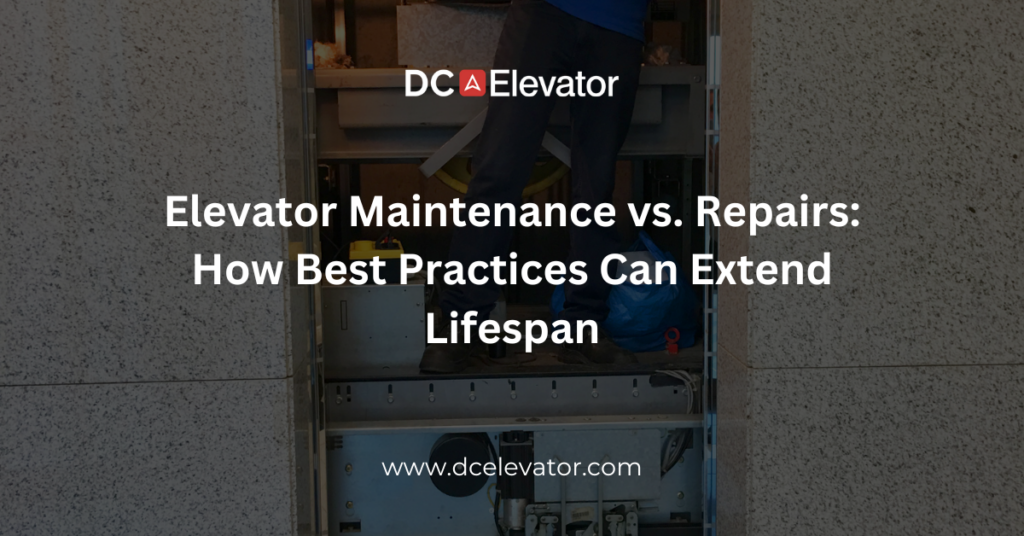Elevators are an integral part of modern buildings, making vertical transportation convenient and efficient. However, like any mechanical system, elevators require regular maintenance and occasional repairs to ensure their longevity and safety. In this blog post, we’ll explore the differences between elevator maintenance and repairs and discuss best practices to extend the lifespan of your elevator system.
Understanding the Difference
Elevator Maintenance
Elevator maintenance refers to the routine, preventative actions taken to keep your elevator running smoothly. It involves regular inspections, lubrication, adjustments, and cleaning of various components. The primary goal of maintenance is to identify and address issues before they lead to costly repairs or downtime.
Elevator Repairs
Elevator repairs, on the other hand, are reactive measures taken when something goes wrong with the elevator. Repairs are necessary when components fail or when the elevator no longer functions safely or efficiently. Repairs can be more expensive and time-consuming than maintenance, making it crucial to prioritize preventive measures.
The Importance of Elevator Maintenance
- Safety: Regular maintenance helps identify and address safety concerns promptly. Elevators that receive regular maintenance are less likely to experience sudden breakdowns, reducing the risk of accidents.
- Cost Savings: Preventative maintenance is often more cost-effective than major repairs or elevator replacement. A well-maintained elevator system can last significantly longer before needing extensive repairs.
- Reliability: Elevator downtime can be disruptive and inconvenient. Regular maintenance minimizes the chances of unexpected breakdowns, ensuring that the elevator is reliable for building occupants.
- Legal Compliance: Many jurisdictions require elevators to undergo periodic inspections and maintenance to comply with safety regulations. Failing to do so can result in fines and legal liabilities.
Best Practices for Elevator Maintenance
- Schedule Regular Inspections: Implement a schedule for routine inspections by certified elevator technicians. These inspections should cover all critical components, including cables, pulleys, motors, and safety features.
- Lubrication and Cleaning: Keep moving parts well-lubricated and clean to reduce friction and wear. Dirty or poorly lubricated components are more likely to fail.
- Stay Proactive: Address minor issues during routine maintenance to prevent them from escalating into major problems. Replace worn-out components promptly.
- Train Building Staff: Ensure that building staff are trained to recognize signs of elevator trouble and know how to respond in emergency situations.
- Follow Manufacturer’s Recommendations: Adhere to the manufacturer’s maintenance guidelines and recommendations for your specific elevator model.
When Repairs Are Necessary
Despite best efforts, elevators may still require repairs from time to time. When this happens:
- Act Quickly: Don’t delay necessary repairs, as they can worsen over time and become more costly.
- Hire Professionals: Always rely on certified elevator technicians for repairs. DIY or unqualified repairs can compromise safety and legality.
- Communicate: Keep building occupants informed about elevator downtime and expected repair timelines.
